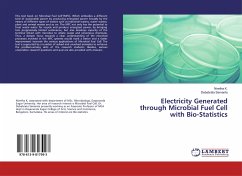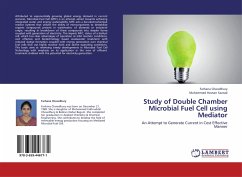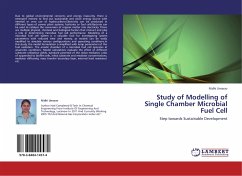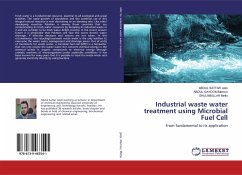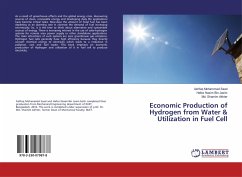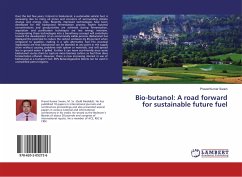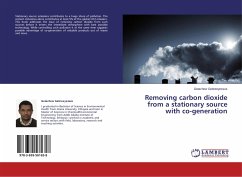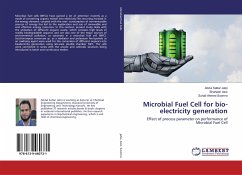
Microbial Fuel Cell for bio-electricity generation
Effect of process parameter on performance of Microbial Fuel Cell
Versandkostenfrei!
Versandfertig in 6-10 Tagen
36,99 €
inkl. MwSt.

PAYBACK Punkte
18 °P sammeln!
Microbial fuel cells (MFCs) have gained a lot of attention recently as a mode of converting organic matter into electricity.The recurring increase in the energy demand, coupled with the over- consumption of nonrenewable sources of energy has led to the exploration and use of renewable and cost effective energy resources. In this context, present study deals with the utilization of different organic waste, which contains high levels of readily biodegradable organics and are also one of the major sources of environmental pollution, as substrate in a microbial fuel cell (MFC). Saccharomyces cerve...
Microbial fuel cells (MFCs) have gained a lot of attention recently as a mode of converting organic matter into electricity.The recurring increase in the energy demand, coupled with the over- consumption of nonrenewable sources of energy has led to the exploration and use of renewable and cost effective energy resources. In this context, present study deals with the utilization of different organic waste, which contains high levels of readily biodegradable organics and are also one of the major sources of environmental pollution, as substrate in a microbial fuel cell (MFC). Saccharomyces cerverciae sp. as a mediator and potassium ferricyanide as an oxidizing agent were used for the conversion of different organics into bioelectrcity generation using lab-scale double chamber MFC. The cells were connected in series with the anodic and cathodic solutions being introduced in batch and continuous modes.



